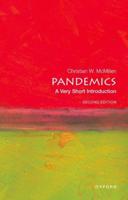Publisher's Synopsis
Excerpt from Medical Record, Vol. 101: A Weekly Journal of Medicine and Surgery
The young callus at first has the character of granulation-tissue, but later on gradually ih creases in solidity through deposit of lime salts. Its mechanical properties are of great importance from the therapeutic viewpoint. Newly developed callus is semi-elastic and yielding, so that it be comes readily deformed under the in?uence of relatively slight forces, resuming its original shape after these forces have ceased to act. But the semi-elastic callus is unable to overcome a marked deformity, which is apt to become perma nent, the callus weakening and giving way under its in?uence. The frequent repetition of injurious factors, including irritation by endogenous patho genic microbes and their toxins acting upon the young callus frequently results in a pseudo arthrosis, which means that no bony but merely a fibrous union has occurred. Provided all mechanical rules have been observed, pseudo arthrosis is probably referable to latent microb ism in the majority of the cases. The solidity of the exuberant callus, which is sometimes formed as a result of latent infection, is due to its great bulk which counteracts its softness. When this mass later on undergoes a transformation into bone-substance, it acquires a much greater solidity than necessary. Before these super?uous bony masses can be reabsorbed through the osteoclasts they may exert an injurious action through pres sure upon adjacent structures, impairment of ar ticular movements, or formation of ankylosis. In other cases the abnormal callus interferes with adjacent organs, especially nerves, resulting in atrophic changes. Exuberant callus will also de velop when the two bone-ends are more or less displaced or imperfectly adjusted. After con solidation has taken place in these cases the large callus serves to strengthen the bone, which al ways needs added support when its longitudinal axis is displaced.
The softness of the young callus requires fixa tion of the injured limb, at least to the degree that the slight restricted excursion does not exceed the elasticity of the callus. The rest, however, which is needed for the reunion of the broken bone re tarde the blood and lymph ?ow, while condemning the muscles to inactivity and exposing them to the danger of atrophy of disuse. As soon as possible during fixation, functional treatment (introduced by lucas-championniere) should be instituted in the form of exercises of the muscles, tendons, and joints, so that their recovery may proceed along with the repair of the fractured bone. A very common cause of badly healed fractures of the long bones consists in stiffening of the adjacent joints, usually associated with incomplete correc tion of the displacement of the broken bone-ends.
About the Publisher
Forgotten Books publishes hundreds of thousands of rare and classic books. Find more at www.forgottenbooks.com
This book is a reproduction of an important historical work. Forgotten Books uses state-of-the-art technology to digitally reconstruct the work, preserving the original format whilst repairing imperfections present in the aged copy. In rare cases, an imperfection in the original, such as a blemish or missing page, may be replicated in our edition. We do, however, repair the vast majority of imperfections successfully; any imperfections that remain are intentionally left to preserve the state of such historical works.









